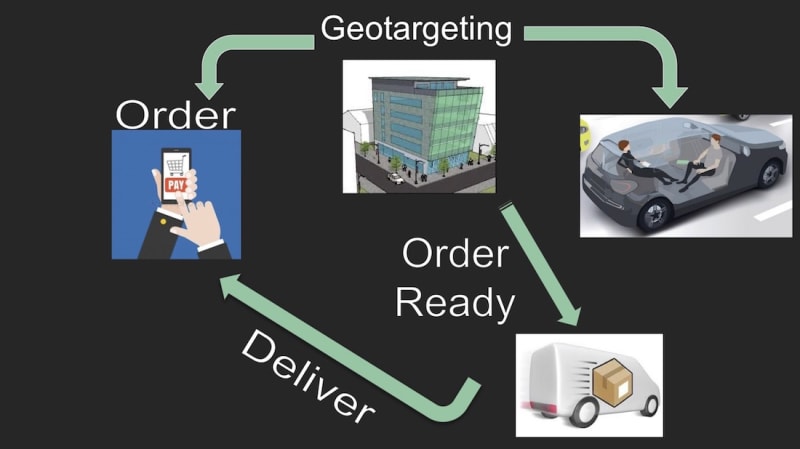Self-driving car technology will disrupt the traditional experience of drivers and occupants. Where once the driver, and to some extent fellow riders, were 100% focused on the road and surrounding objects, behest not only by law, but by self-preservation, future unconstrained travel frees the driver and occupants for an improved quality of life. In a mobile computing world, care free, liberated transit opens the door for a mobile phone application to control and monitor the vehicle’s destination, health, security, and operating charges. Having this need fulfilled, yields a software solution that changes the purchasing mindset for both the seller and consumer of goods and services. The value provided to the traveler, in terms of managing the overall vehicle and journey, gives them the motivation to install MyDrive and sets in motion a geographical based (also known as location-aware) medium to allow sellers to offer their wares directly to roaming buyers in the region of their choice, down to a street address.
Not only is the marketing revolutionized, but delivery is also a prime channel for reinvention. Think of the scenario where producers no longer need to manage their own delivery system. They merely offer packages and goods for delivery and immediately an armada of drivers cherry picks the items they wish to pick up and drop off. Conveyance charges are mutually agreed on in a real-time fashion between the two parties.
MyDrive users benefit from a number of transportation and shopping related features. They can set destinations and apply a route. If connected to a community-based traffic and navigation application (e.g., Waze), their directions automatically adjust to road conditions and traffic. This is a powerful feature at the user’s fingertips. Car mechanics, like opening and closing doors and windows, is enabled from the mobile device. The health of the vehicle is monitored through real-time diagnostics. One’s self-driving car can now be tendered as a car pooling service and charges negotiated real-time between operator and passenger, using the same logic as the package delivery rate bartering. Not only are MyDrive users receiving advertisements on their mobile device, but they can then subscribe to their “favorite” store for up-to-date product availability and be directed to the seller’s website for ordering.
Digital marketing campaigns are becoming more prevalent and efficient. One-third of the 2016 $35 billion automotive spend on marketing was from fixed costs. One-third of fixed costs was on digital marketing, equalling $3.9 billion per year disbursement on computerized channels. MyDrive’s advertising cost model accounts for a mobile user’s number of clicks in the seller’s geographic area of interest, along with subscriptions sold. Frequent repositioning of the self-driving vehicle will make promoting more dynamic than Google’s geotargeting and geofencing, which in its own right is considered very powerful.
The components to build MyDrive range from a GUI application on the mobile device to software on a server to manage geographical advertising, delivery offerings, and a fleet of vehicles. WiFi connectivity is essential to activate the vehicle CAN bus for commands and feedback.
Like this entry?
-
About the Entrant
- Name:Walter Peregrim
- Type of entry:individual
- Software used for this entry:N/A
- Patent status:none

